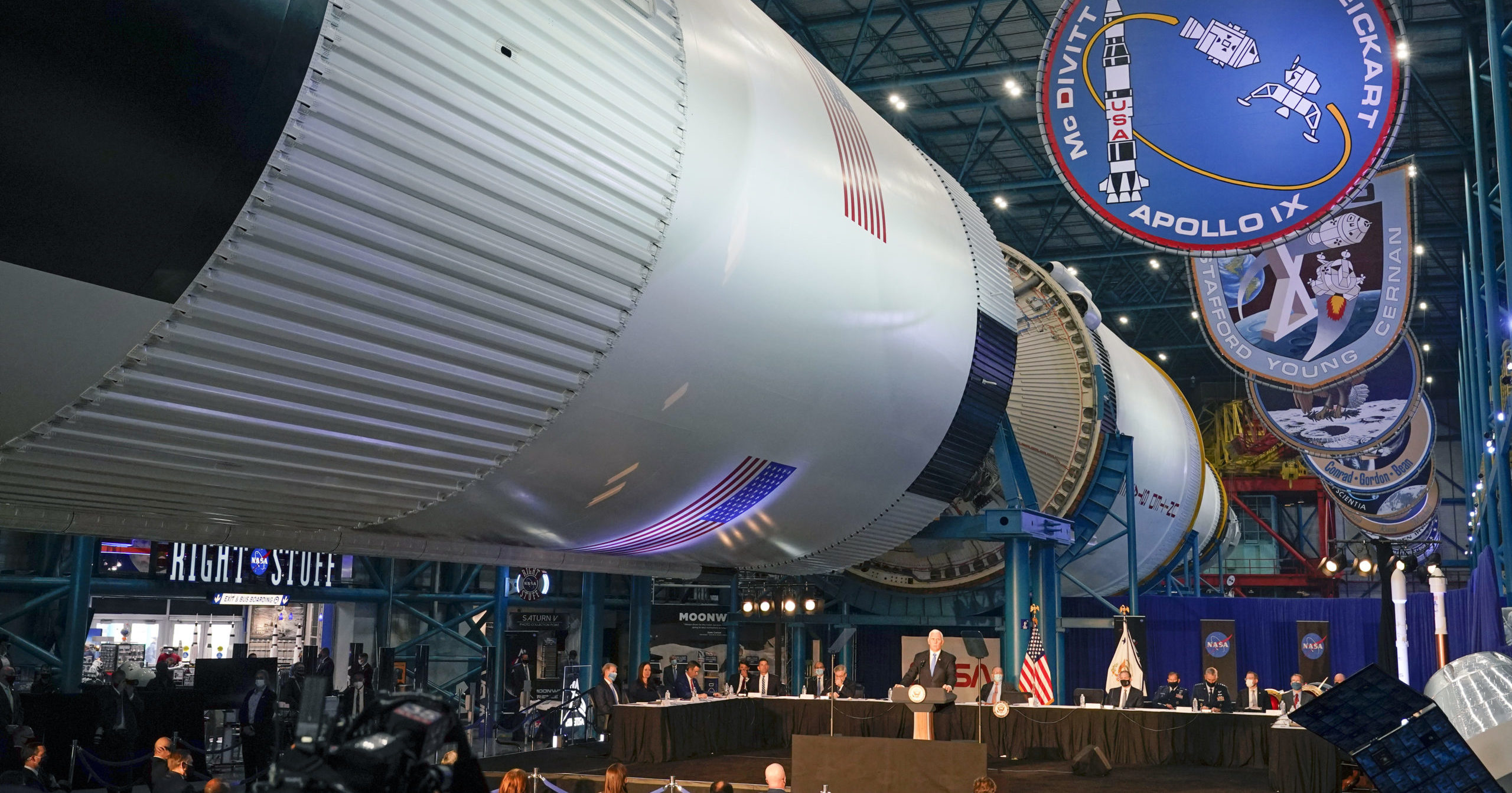
Pence Announces Elite Group of NASA Astronauts To Train for Moon Landing
NASA has named the 18 astronauts who will train for its Artemis moon landing program.
The first woman and next man on the moon will come from this elite group.
Vice President Mike Pence introduced the astronauts on Dec. 9 at the close of a meeting of the National Space Council.
The announcement was made at Florida’s Kennedy Space Center, beneath one of only three remaining Saturn V moon rockets from the 1960s and ’70s Apollo program.
The last of the 12 men to walk on the moon was the late Apollo 17 commander Gene Cernan, whose final lunar footsteps were on Dec. 14, 1972.
“He spent the rest of his natural life advocating for America to go back to the moon, and we are going to honor Gene Cernan’s memory,” Pence told the small crowd.
Five of the astronauts were in attendance at the meeting.
NASA administrator Jim Bridenstine said there would be more astronauts joining the group. NASA has 47 active astronauts.
The space agency is aiming for a moon landing by 2024.
Half of the NASA astronauts have spaceflight experience. Two are at the International Space Station right now: Kate Rubins and Victor Glover.
It’s a fairly young group, with most in their 30s or 40s. The oldest is 55, the youngest 32.
Only two — Joe Acaba and Stephanie Wilson — flew on NASA’s old space shuttles.
“The history is awesome, but we’re here to look toward the future,” Acaba told reporters after the announcement.
The other experienced members on the list include Kjell Lindgren, Anne McClain and Scott Tingle, all former space station residents.
“We are dreamers, but even more so, we’re doers,” McClain said.
Among those yet to rocket into space: Kayla Barron, Raja Chari, Matthew Dominick, Woody Hoburg, Jonny Kim, Nicole Mann, Jasmin Moghbeli, Frank Rubio and Jessica Watkins.
The Western Journal has reviewed this Associated Press story and may have altered it prior to publication to ensure that it meets our editorial standards.
Truth and Accuracy
We are committed to truth and accuracy in all of our journalism. Read our editorial standards.
Advertise with The Western Journal and reach millions of highly engaged readers, while supporting our work. Advertise Today.












